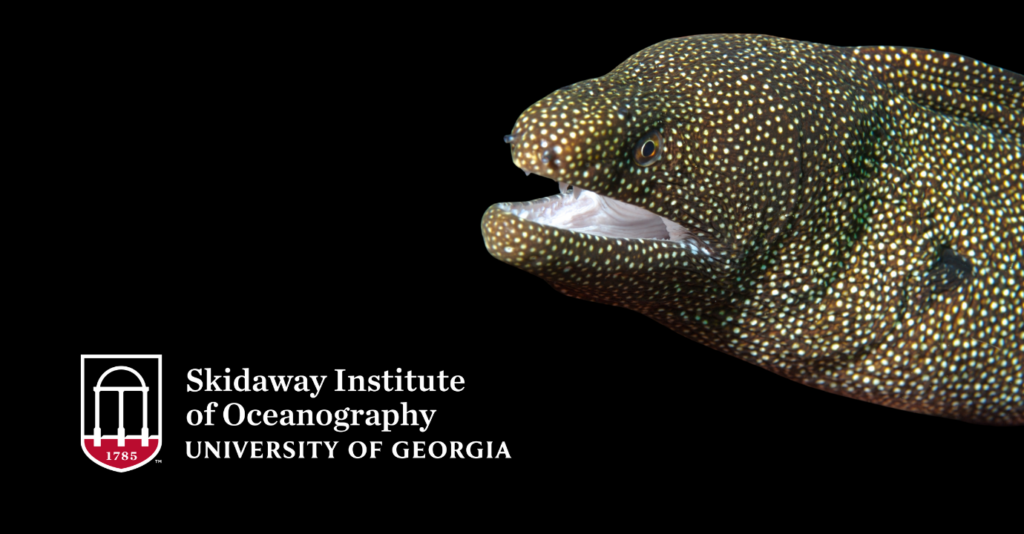
Scientists from the University of Georgia Skidaway Institute of Oceanography (SkIO) have discovered that the ear bones of moray eels provide important clues about the sources of trace metals on the outer continental shelf. By studying the trace metals found in these non-migratory fish, scientists can better predict areas of significant ocean activity, such as upwelling, and groundwater intrusion.
To reach their findings, SkIO’s Herbert Windom and William Savidge analyzed trace metal concentrations in the otoliths (ear bones) of moray eels living in the hard bottom reefs off Georgia and South Carolina.
Because moray eels typically stay in the same area, the researchers hypothesized that the metals found in their otoliths would reflect the types of metals in their environments. The results confirmed this hypothesis.
For instance, in an area called Scamp Ridge, the trace metal composition in the otoliths of eels differed significantly from that of eels living on either side of that area.
“It turns out we have upwelling at Scamp Ridge,” explained Windom, emeritus professor. “Deep water underneath the Gulf Stream is enriched with metals like copper and zinc, but depleted in vanadium and manganese. Compared to the other otoliths, we observed increased levels of copper and zinc and decreased levels of vanadium and manganese in the eels living at Scamp Ridge.”
The study also suggests that moray eels’ otoliths may be effective in detecting localized groundwater intrusion from the Floridan aquifer into the shelf.
“You can put instruments out there, but that’s very difficult,” explained Windom. “However, if you have organisms that concentrate the metals in their otoliths, the eels can serve as a valuable tool.”
Understanding how trace metals move is essential because they provide nutrients for marine life, especially at the base of the food chain. However, too many trace metals can harm marine ecosystems. By studying the presence and movement of these metals, scientists can gain a clearer picture of nutrient availability and the health of marine environments.
The full study, titled “Sources and Transport Pathways of Trace Metals to the Outer Continental Shelf off South Carolina and Georgia, USA Revealed from the Otoliths of Moray Eels,” is available online in Continental Shelf Research.
About SkIO
The UGA Skidaway Institute of Oceanography (SkIO) is a multidisciplinary research and training institution located on Skidaway Island near Savannah, Georgia. The Institute was founded in 1967 with a mission to conduct research in all fields of oceanography. In 2013, SkIO was merged with the University of Georgia. The campus serves as a gateway to coastal and marine environments for programs throughout the University System. The Institute’s primary goals are to further the understanding of marine and environmental processes, conduct leading-edge research on coastal and marine systems, and train tomorrow’s scientists. For more information, visit www.skio.uga.edu.


